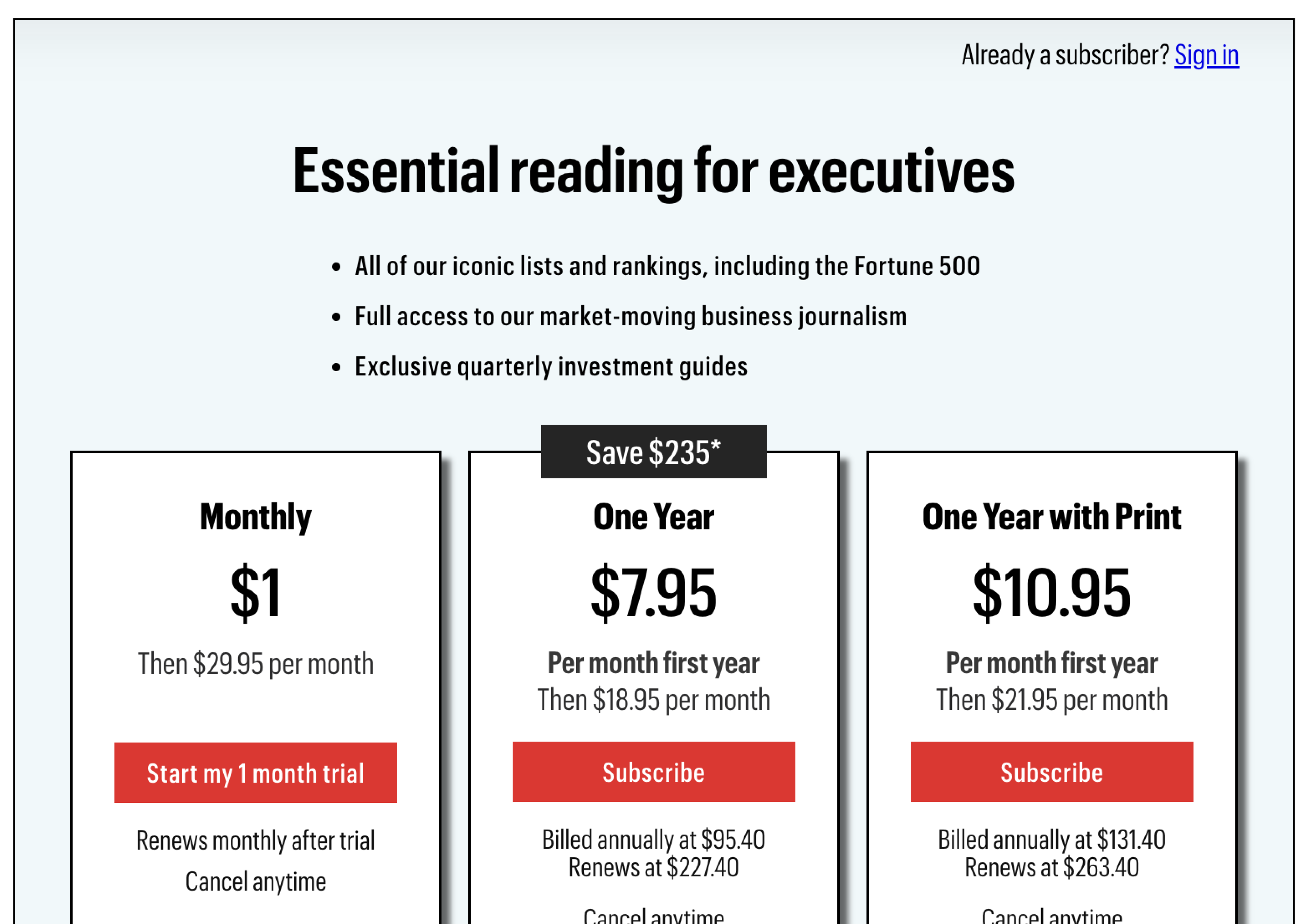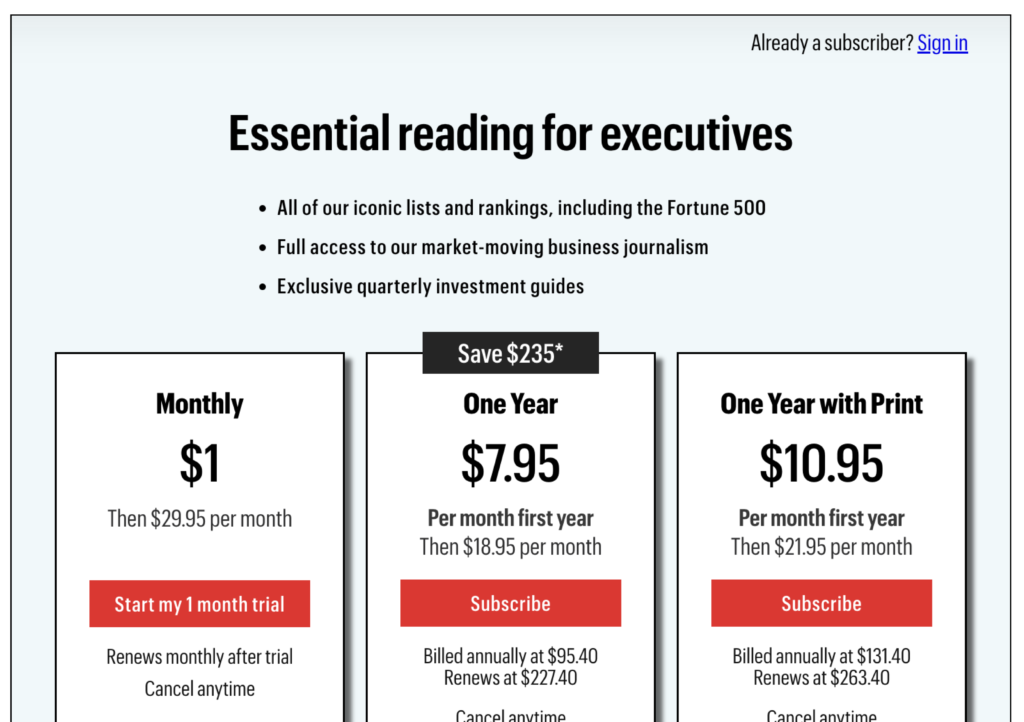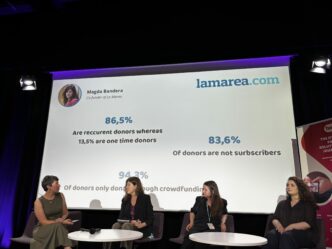

This article is part of a series of deep dives into digital publishers' subscription models, bringing together Lennart's key takeaways from his podcast conversations (available in German) and Madeleine's research on the wider publishing community.
U.S. business magazine Fortune is about to turn 100 years old, but for Chief Customer Officer Selma Stern, it feels more like a startup. She left Axel Springer for New York in 2019 to build their subscription business and, last year she joined Fortune Media’s executive team.
In a recent episode of Subscribe Now, she talks about what she’s learned in the U.S. media market and why she thinks many beliefs in publishing are outdated. You can find the full interview at Subscribe Now.
Here are my top 4 from the interview:
Diverse teams can break through outdated beliefs
Selma sees a big difference between the U.S. and Germany in the fact that diversity has already become more of a part of everyday life there. This applies not only to ethnicities and genders, but also to specialist expertise. Teams with homogeneous experiences often reinforce each other’s beliefs, while diverse teams challenge them, often achieving successes that previously seemed impossible.
In their case, for example, that’s the daily collaboration between female journalists, data analysts, techies and business leaders. At Fortune right now, the CTO and the editor-in-chief are leading a joint initiative on AI in journalism.
Amy Kean, former Head of Innovation for Publicis and now CEO and Creative Director of Good Shout, a company helping people communicate better, recently discussed this in an interview on Media Voices podcast, suggesting that media companies need to hire more ‘weirdos’ and ‘celebrate difference more’.
The strapline for Good Shout is, ‘We are all experiments’ and Amy says you have to give your people space to grow and find themselves. “Otherwise, you’ll just have this homogenous lump of people working in your organisation who just want to fit in and survive.”
Read the summary of Media Voices’ interview with Amy on What’s New in Publishing.
As chief customer officer, Selma orchestrates communication between teams and tries to break down silos
The print world was characterized by sequential workflows, where one department completed its step and then the next department took over. This organization no longer works in digital, because processes are more closely interlinked, run faster and more happens in parallel. One of her core tasks as Chief Customer Officer is to bring these silos into conversation with each other and establish new processes. As with all change processes, it is important to create trust and security so that employees are willing to try out new approaches.
We're going to be discussing bridge roles at The Audiencers' Festival in October with Martina Andretta, Audience Specialist & Head of Social at New Statesman, Lars K. Jensen, Audience, data & journalism at Berlingske group and Dmitry Shishkin, Independent Digital Publishing Consultant, who practically invented bridge roles! It's going to be an incredibly interesting discussion - register your interest here.
Economic metrics are more important than vanity metrics
Selma gets emotional on this topic. In her view, the media industry is far too focused on reach and forget about sales. As a result, supervisors set the wrong incentives, leading to many new customers being acquired with dumping prices. These readers often don’t stay long and bring little revenue.
Instead, publishers should invest in customer loyalty, taking into account that retention is more valuable and less costly than acquisition. For your most loyal subscribers, focus can be placed on upselling and bundling to maximize subscriber value. Data helps with this reorientation.
Through a Van Westendorp price analysis, they were able to determine their customers’ willingness to pay, increase pricing when possible and so double their revenue in one year without significantly losing customers.
This links back to our conversations with other experts on the most valuable engagement metrics to track in a subscription model…
For Steve Price, digital publishing consultant, the key is to look at your most loyal subscribers, analyzing what engagement actions are linked to high-value users, i.e. connecting engagement to the pounds, dollars and euros.
Concretely, how do you achieve this?
Analyze who your existing customers are, what do they do, how do they consume your content, when do they engage with you, how often?…
For Steve, this means putting Lifetime Value (LTV) as your north star metric:
Lifetime value = subscriber value x average customer lifespan
The result will give you the revenue that you can reasonably expect an average subscriber to generate for your company throughout their relationship with you.
However, the main value lies in analyzing these high-value subscribers, asking yourself what ‘type’ of engagement correlates with high retention rates. If you can link engagement to retention, then you’ll gain a deeper understanding of how you can increase engagement to secure high conversion and retention rates.
>Find out more in our article, Ask the experts: what are the most valuable engagement metrics to measure in a subscription model?
Paywalls should be based on the user, not the content
Many paywalls differentiate between free and paid content. Based on experience and gut feeling, the editorial team determines for each article which category it falls into. Often, elaborate, exclusive research and useful content are then locked away, while quick, interchangeable articles are free.
However, Selma’s analyses have shown that the likelihood of a user subscribing is less related to the type of content and more to individual usage behavior. Those who visit the site often and regularly are potential subscribers and should encounter the paywall correspondingly often. However, readers who only visit sporadically should get the same article for free and then be gently prompted to sign up before the hard paywall arrives. This dynamic paywall leads to more subscriptions and allows newcomers to get to know the brand and the content first.

This is a subject we’ve discussed a lot on The Audiencers –
A dynamic paywall is one that adapts to the reader’s profile or context, i.e. there isn’t just one paywall that is presented to all visitors to the site. Instead, the publisher segments their audience, building and testing various paywalls for different audiences.
In terms of performance of this type of paywall compared to standard models (freemium, metered or hard), dynamic paywalls present users with a conversion journey, wall messaging and design that is most optimal for converting that specific type of reader into a member or subscriber. For this reason, a dynamic paywall is widely recognized as the optimal model for increasing conversion rates and ARPU.
However, perhaps the misconception with dynamic models is that you need an expensive, complicated machine learning algorithm that takes time (and money) to implement. And whilst these AI models that learn and adapt over time without human intervention are incredibly valuable for publishers, they aren’t the only way to be dynamic.
In fact, implementing a dynamic model can start with some very (very) simple strategies that will still make a significant difference to your overall conversion rates. We list a variety of different dynamic paywall examples in our article: How to dynamic paywall (it’s a lot more simple than you think).












